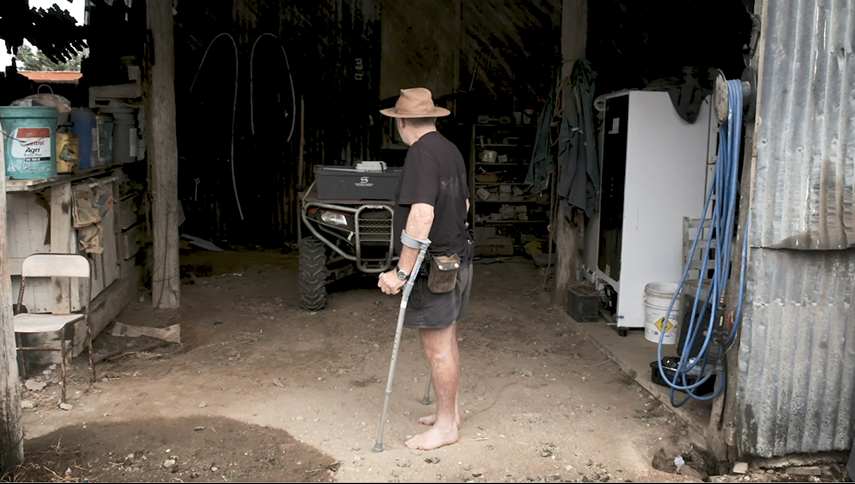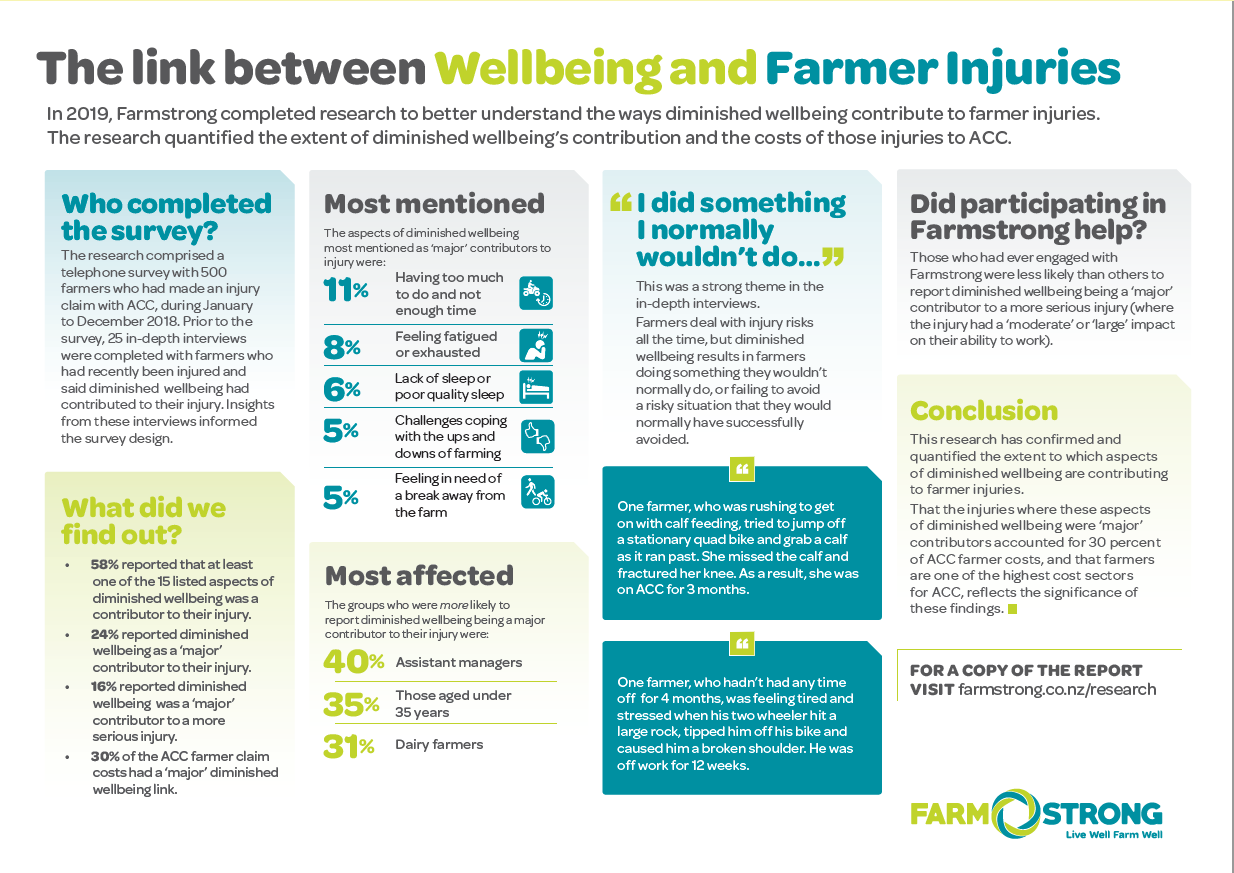
Study finds wellbeing and injury connection
Module Overview
New research has established the links between aspects of diminished wellbeing and on-farm injuries.
The study, aimed to understand the relationship between aspects of diminished wellbeing and on-farm injuries, asked 500 farmers receiving ACC to quantify the extent to which different aspects of diminished wellbeing had contributed to their accident.
The results were telling – well over half – 58% – reported that an aspect of diminished wellbeing had contributed to their accident.
Nearly a quarter (24%) identified diminished wellbeing as a ‘major’ contributor to their injury, with 16% contributing diminished wellbeing to a very serious injury (one that had a moderate or large impact on their ability to work).
The study also found that 30% of ACC farmer claim costs were linked to diminished wellbeing.
The most frequently mentioned aspects of diminished wellbeing which were major contributors to injury were:
- Having too much to do and not enough time (11%)
- Feeling fatigued or exhausted (8%)
- Lack of sleep or poor quality sleep (6%)
- Challenges coping with the ups and downs of farming (5%)
- Feeling in need of a break away from the farm (5%)
On the positive side, the study also found that farmers who had engaged in Farmstrong were less likely than others to report diminished wellbeing being a ‘major’ contributor to a serious injury.
These insights have helped Farmstrong understand the ways in which diminished wellbeing contributes to farmer injuries. We know that farmers deal with injury risks all the time, but diminished wellbeing causes farmers to do something they wouldn’t normally do, or fail to avoid a risky situation that they normally would have successfully avoided.
Those aged under 35 years (35%) and dairy farmers (31%) were more likely than others to report aspects of diminished wellbeing being a major contributor to their injury. 30% had gone back to work earlier than recommended.

Just over half of the farmers (53%) said they would have been willing to give some kind of online programme a go if it was sent to them while injured (if they were told the programme could be used to identify their top injury risks and develop their own plan for managing them).
16% reported that at the time of their injury there was less than the usual number of people working on the farm for that time of year. On these farms, the rate at which aspects of diminished wellbeing were a major contributor to the injury (32%) was almost three times the level on farms without personnel shortages (11%).
Read the summary full report here and the executive summary report here.
Related posts
Reducing stress and fatique to avoid accidents


